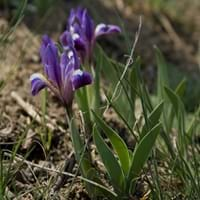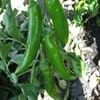Life Span
Perennial
Perennial
Origin
Mexico, Central America, South America
World, Pandemic, North America, Europe, Africa, Asia
Types
Ancho chili
Alizes
Bumblebee Deelite
Maui Moonlight
Langport Wren
Sarah Taylor
Titan's Glory
Thornbird
Jane Phillips
Orinoco Flow
Number of Varieties
Not Available
Habitat
Fertile bottom land
gardens, Hillside, Riverbanks, Warmer regions, Wet forest
USDA Hardiness Zone
5-12
Not Available
Sunset Zone
A1, A2, A3, H1, H2, 1a, 1b, 2a, 2b, 3a, 3b, 4, 5, 6, 7, 8, 9, 10, 11, 12, 13, 14, 15, 16, 17, 18, 19, 20, 21, 22, 23, 24
Not Available
Habit
Upright/Erect
Clump-Forming
Minimum Height
Not Available
Minimum Width
Not Available
Flower Color
White, Green, Ivory
White, Yellow, Blue, Purple, Orange, Pink, Rose, Coral, Peach, Burgundy, Lavender, Plum, Orange Red, Dark Salmon, Bronze, Chocolate, Black
Flower Color Modifier
Bicolor
Bicolor
Fruit Color
Red, Green, Orange Red
Not Available
Leaf Color in Spring
Green
Not Available
Leaf Color in Summer
Green
Not Available
Leaf Color in Fall
Green, Black
Not Available
Leaf Color in Winter
Not Available
Light Green
Leaf Shape
Ovate
Long Linear
Plant Season
Summer, Fall
Not Available
Sunlight
Full Sun
Full Sun, Partial Sun
Growth Rate
Medium
Medium
Type of Soil
Loam
Clay, Loam, Sand
The pH of Soil
Neutral
Acidic, Neutral, Alkaline
Soil Drainage
Well drained
Well drained
Bloom Time
Late Spring, Early Summer, Summer, Late Summer, Indeterminate
Not Available
Tolerances
Drought
Drought
Where to Plant?
Container, Ground, Pot
Ground, Pot
How to Plant?
Seedlings
From Rhizomes, Stem Planting
Plant Maintenance
Medium
Medium
Watering Requirements
Average Water Needs, Do Not over Water, Requires regular watering
Does not require lot of watering, Keep ground moist, Water when soil is dry
In Summer
Lots of watering
Lots of watering
In Spring
Moderate
Moderate
In Winter
Average Water
Average Water
Soil pH
Neutral
Acidic, Neutral, Alkaline
Soil Type
Loam
Clay, Loam, Sand
Soil Drainage Capacity
Well drained
Well drained
Sun Exposure
Full Sun
Full Sun, Partial Sun
Pruning
Remove damaged leaves, Remove dead branches, Remove dead leaves, Remove dead or diseased plant parts, Remove deadheads
Remove dead leaves, Remove dead or diseased plant parts, Requires very little pruning
Fertilizers
5-10-10 fertilizer
All-Purpose Liquid Fertilizer
Pests and Diseases
Red blotch
Bacterial Diseases, Fungal Diseases, Viruses
Plant Tolerance
Drought
Drought
Flower Petal Number
Single
Single
Foliage Texture
Medium
Medium
Foliage Sheen
Glossy
Matte
Attracts
Aphids
Bees, Butterflies
Allergy
Constipation, Diarrhea, Headache, Hives, Itchiness, Low blood pressure, Nausea, Runny nose, Sore eyes, Sore Throat, Swelling in the face, Swollen Lips, Vomiting
Asthma
Aesthetic Uses
Not Used For Aesthetic Purpose
Beautification, Showy Purposes
Beauty Benefits
Not Available
Not Available
Environmental Uses
Air purification
Air purification
Medicinal Uses
Not Available
No Medicinal Use
Part of Plant Used
Fruits, Seeds
Flowers, Leaves, Rhizomes, Root
Other Uses
Used As Food
Making Perfumes, Oil is used for aromatherapy, Used as a sedative, Used as essential oil
Used As Indoor Plant
Yes
No
Used As Outdoor Plant
Yes
Yes
Garden Design
Bedding Plant, Container, Edible, Herb / Vegetable, Mixed Border, Tropical
Bedding Plant, Cutflower, Mixed Border, Rock Garden, Wall
Botanical Name
CAPSICUM annuum 'Anaheim'( Longum Group)
IRIS
Common Name
Anaheim Chile, Hot Pepper
Iris
In Hindi
Anaheim Chile Plant
Iris
In German
Anaheim Chile Pflanze
Iris
In French
Anaheim Chili Plante
Iris
In Spanish
Planta de Chile Anaheim
Iris
In Greek
Anaheim Χιλή Φυτών
Ίρις
In Portuguese
Anaheim Chile Planta
Íris
In Polish
Anaheim Chile roślin
Irys
In Latin
Planta Anaheim Chile
Iris
Phylum
Magnoliophyta
Tracheophyta
Class
Magnoliopsida
Liliopsida
Order
Solanales
Asparagales
Family
Solanaceae
Iridaceae
Clade
Asterids, Eudicots
Angiosperms, Monocots
Tribe
Not Available
Irideae
Subfamily
Not Available
Iridoideae
Number of Species
Not Available
Properties of Anaheim Chili and Iris
Wondering what are the properties of Anaheim Chili and Iris? We provide you with everything About Anaheim Chili and Iris. Anaheim Chili doesn't have thorns and Iris doesn't have thorns. Also Anaheim Chili does not have fragrant flowers. Anaheim Chili has allergic reactions like Constipation, Diarrhea, Headache, Hives, Itchiness, Low blood pressure, Nausea, Runny nose, Sore eyes, Sore Throat, Swelling in the face, Swollen Lips and Vomiting and Iris has allergic reactions like Constipation, Diarrhea, Headache, Hives, Itchiness, Low blood pressure, Nausea, Runny nose, Sore eyes, Sore Throat, Swelling in the face, Swollen Lips and Vomiting. Compare all the properties and characteristics of these two plants. Find out which of these plant can be used as indoor plant. If you are interested to decorate your house and garden, find out aesthetic uses, compare them and select the plant which will beautify your surrounding. Along with beautification, try comparing medicinal and edible uses of Anaheim Chili and Iris and you can choose the plant having best and most benefits.
Season and Care of Anaheim Chili and Iris
Season and care of Anaheim Chili and Iris is important to know. While considering everything about Anaheim Chili and Iris Care, growing season is an essential factor. Anaheim Chili season is Summer and Fall and Iris season is Summer and Fall. The type of soil for Anaheim Chili is Loam and for Iris is Clay, Loam, Sand while the PH of soil for Anaheim Chili is Neutral and for Iris is Acidic, Neutral, Alkaline.
Anaheim Chili and Iris Physical Information
Anaheim Chili and Iris physical information is very important for comparison. Anaheim Chili height is 45.70 cm and width 38.10 cm whereas Iris height is Not Available and width Not Available. The color specification of Anaheim Chili and Iris are as follows:
Anaheim Chili flower color: White, Green and Ivory
Anaheim Chili leaf color: Green
Iris flower color: White, Yellow, Blue, Purple, Orange, Pink, Rose, Coral, Peach, Burgundy, Lavender, Plum, Orange Red, Dark Salmon, Bronze, Chocolate and Black
- Iris leaf color: Not Available
Care of Anaheim Chili and Iris
Care of Anaheim Chili and Iris include pruning, fertilizers, watering etc. Anaheim Chili pruning is done Remove damaged leaves, Remove dead branches, Remove dead leaves, Remove dead or diseased plant parts and Remove deadheads and Iris pruning is done Remove dead leaves, Remove dead or diseased plant parts and Requires very little pruning. In summer Anaheim Chili needs Lots of watering and in winter, it needs Average Water. Whereas, in summer Iris needs Lots of watering and in winter, it needs Average Water.





